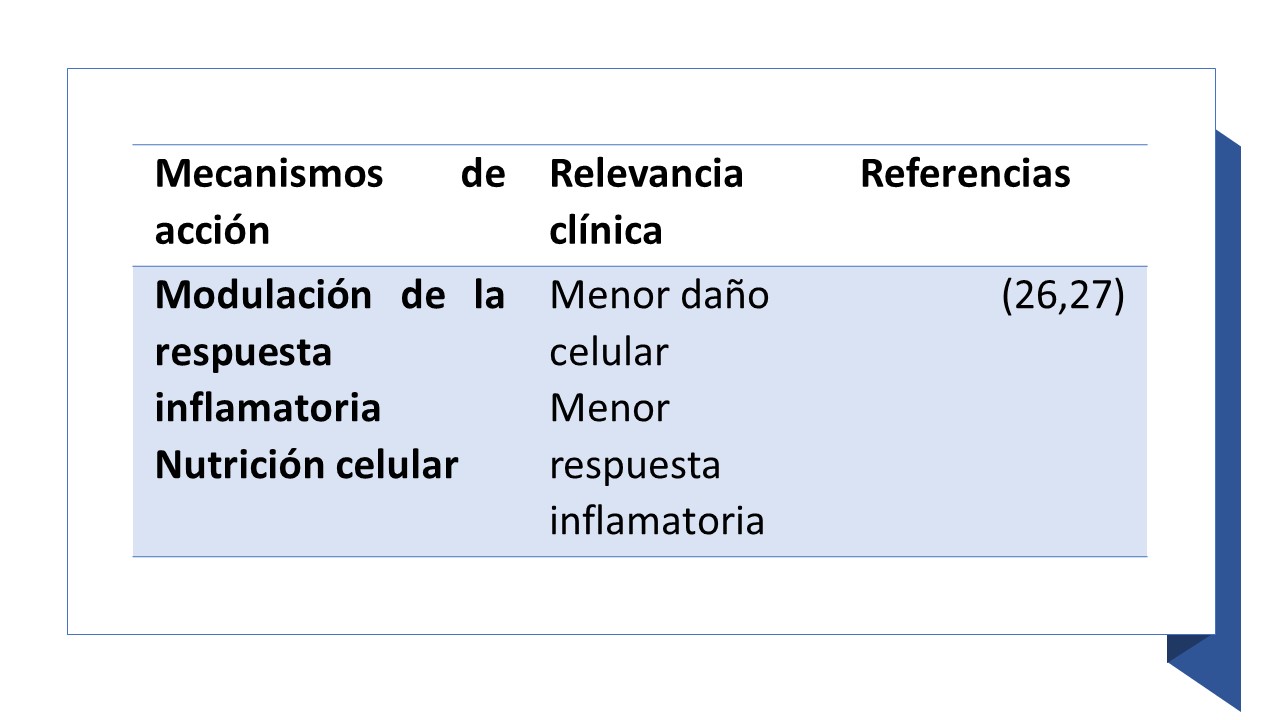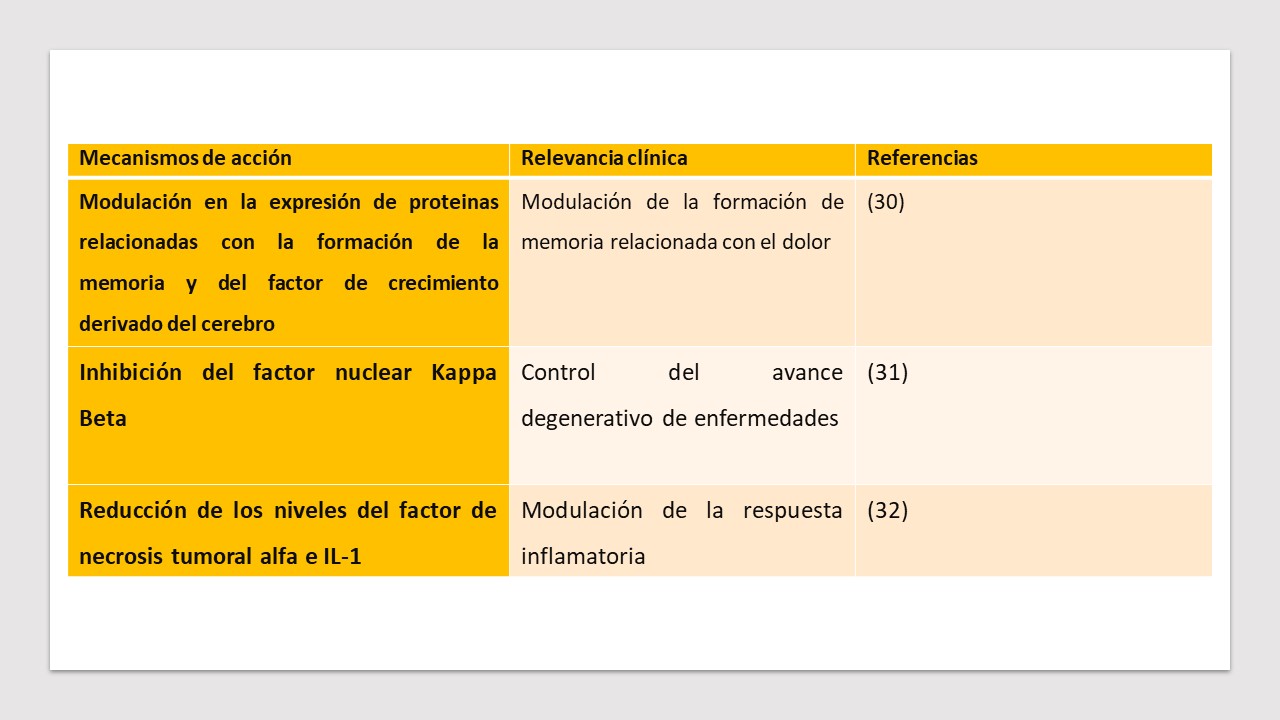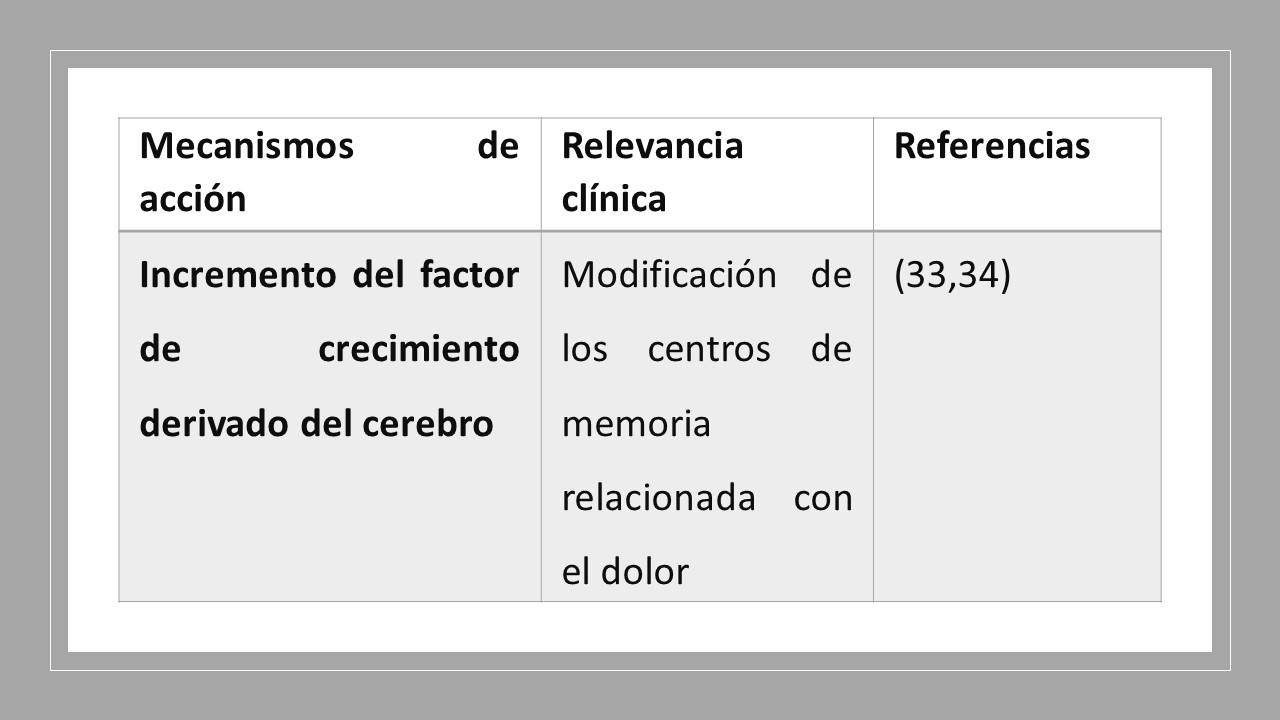El dolor es una experiencia subjetiva y negativa asociada a daño (o potencial daño) en los tejidos con componentes sensoriales, emocionales, cognitivos y sociales (1). Si bien es cierto que a lo largo de la vida toda persona padecerá varios episodios de dolor, sólo en ocasiones este llega a tener una relevancia clínica bien sea por los procesos fisiopatológicos subyacentes, o bien por el tiempo de evolución del cuadro clínico (2). En el mundo contemporáneo el dolor crónico constituye todo un reto para los médicos y profesionales de la salud dedicados a su atención (3).

Las causas del dolor son variables y muestran variación según el grupo etario. En niños y adolescentes son comunes los dolores abdominales, cefalea, cervicalgia y dorsalgia describiéndose en ellos prevalencias de hasta el 49% (4–6). En adultos son frecuentes el dolor de rodillas (generalmente como consecuencia de la artrosis), lumbago, ciática, dolor de hombros, fibromialgia y el dolor neuropático con prevalencias de hasta el 60% (7–11). Indudablemente el dolor produce efectos negativos sobre la calidad de vida de quien lo padece y sus familias, disminuye la capacidad funcional, obliga a un mayor uso de los servicios de salud y produce costos directos derivados de su atención (12).
Los mecanismos implicados en la generación del dolor son complejos e incluyen el daño tisular, inflamación, alteración en la expresión de factores de expresión y la producción de diferentes mediadores que explican su desarrollo (13,14). La memoria que se crea sobre el dolor es también de gran importancia en el entendimiento del dolor crónico, es decir, para la mayoría de entidades clínicas que cursan con dolor (15,16).
La complejidad del dolor obliga a un abordaje multidisciplinario y con aproximaciones terapéuticas variadas para alcanzar su control efectivo (17). El farmacológico del dolor crónica suele tener tasas de satisfacción bajas (cercanas al 45%) lo cual motiva a las personas y a los profesionales de la salud a buscar otros tratamientos que permitan su control (18). Aunque el uso de la medicina complementaria y alternativa mejora la satisfacción del paciente en términos del control del dolor, son muchos los casos en los cuales incluso estas estrategias habitualmente utilizadas no son suficientes. La apiterapia es una herramienta terapéutica adicional que mejora los resultados terapéuticos en pacientes que cursan con dolor agudo y crónico.
Efectos de los productos de la colmena en el manejo del dolor
Son diversos los mecanismos que explican el efecto de los productos de la colmena en el manejo del dolor:
Veneno de abejas

Pan de abejas

Propóleo

Jalea real

Miel de abejas

Referencias bibliográficas
1. Williams AC de C, Craig KD. Updating the definition of pain. Pain [Internet]. 2016 Nov;157(11):2420–3. Available from: http://content.wkhealth.com/linkback/openurl?sid=WKPTLP:landingpage&an=00006396-201611000-00006
2. Borsook D, Youssef AM, Simons L, Elman I, Eccleston C. When pain gets stuck. Pain [Internet]. 2018 Dec;159(12):2421–36. Available from: http://insights.ovid.com/crossref?an=00006396-201812000-00002
3. Crofford LJ. Chronic Pain: Where the Body Meets the Brain. Trans Am Clin Climatol Assoc [Internet]. 2015;126:167–83. Available from: http://www.ncbi.nlm.nih.gov/pubmed/26330672
4. ABU-ARAFEH I, RAZAK S, SIVARAMAN B, GRAHAM C. Prevalence of headache and migraine in children and adolescents: a systematic review of population-based studies. Dev Med Child Neurol [Internet]. 2010 Dec;52(12):1088–97. Available from: http://doi.wiley.com/10.1111/j.1469-8749.2010.03793.x
5. King S, Chambers CT, Huguet A, MacNevin RC, McGrath PJ, Parker L, et al. The epidemiology of chronic pain in children and adolescents revisited: A systematic review. Pain [Internet]. 2011 Dec;152(12):2729–38. Available from: http://content.wkhealth.com/linkback/openurl?sid=WKPTLP:landingpage&an=00006396-201112000-00012
6. Jeffries LJ, Milanese SF, Grimmer-Somers KA. Epidemiology of Adolescent Spinal Pain. Spine (Phila Pa 1976) [Internet]. 2007 Nov;32(23):2630–7. Available from: https://insights.ovid.com/crossref?an=00007632-200711010-00020
7. Peat G. Knee pain and osteoarthritis in older adults: a review of community burden and current use of primary health care. Ann Rheum Dis [Internet]. 2001 Feb 1;60(2):91–7. Available from: http://ard.bmj.com/cgi/doi/10.1136/ard.60.2.91
8. Taylor JB, Goode AP, George SZ, Cook CE. Incidence and risk factors for first-time incident low back pain: a systematic review and meta-analysis. Spine J [Internet]. 2014 Oct;14(10):2299–319. Available from: https://linkinghub.elsevier.com/retrieve/pii/S152994301400103X
9. van Hecke O, Austin SK, Khan RA, Smith BH, Torrance N. Neuropathic pain in the general population: A systematic review of epidemiological studies. Pain [Internet]. 2014 Apr;155(4):654–62. Available from: http://content.wkhealth.com/linkback/openurl?sid=WKPTLP:landingpage&an=00006396-201404000-00004
10. Konstantinou K, Dunn KM. Sciatica. Spine (Phila Pa 1976) [Internet]. 2008 Oct;33(22):2464–72. Available from: https://insights.ovid.com/crossref?an=00007632-200810150-00018
11. Luime J, Koes B, Hendriksen I, Burdorf A, Verhagen A, Miedema H, et al. Prevalence and incidence of shoulder pain in the general population; a systematic review. Scand J Rheumatol [Internet]. 2004 Mar 12;33(2):73–81. Available from: http://www.tandfonline.com/doi/full/10.1080/03009740310004667
12. Henschke N, Kamper SJ, Maher CG. The Epidemiology and Economic Consequences of Pain. Mayo Clin Proc [Internet]. 2015 Jan;90(1):139–47. Available from: https://linkinghub.elsevier.com/retrieve/pii/S0025619614008659
13. Woolf CJ, Bennett GJ, Doherty M, Dubner R, Kidd B, Koltzenburg M, et al. Towards a mechanism-based classification of pain? Pain. 1998.
14. Zhuo M. Neuronal mechanism for neuropathic pain. Molecular Pain. 2007.
15. Sandkühler J. Learning and memory in pain pathways. Pain. 2000.
16. Ji RR, Kohno T, Moore KA, Woolf CJ. Central sensitization and LTP: Do pain and memory share similar mechanisms? Trends in Neurosciences. 2003.
17. Glowacki D. Effective Pain Management and Improvements in Patients’ Outcomes and Satisfaction. Crit Care Nurse [Internet]. 2015 Jun 1;35(3):33–41. Available from: https://aacnjournals.org/ccnonline/article/35/3/33/3485/Effective-Pain-Management-and-Improvements-in
18. Ueda K, Sasaki N, Goren A, Calhoun SR, Shinjo K, Enomoto H, et al. Treatment satisfaction with pharmaceutical interventions in Japanese adults with osteoarthritis and chronic knee pain: an analysis of a web-based survey. Clin Interv Aging [Internet]. 2018 Oct;Volume 13:2179–91. Available from: https://www.dovepress.com/treatment-satisfaction-with-pharmaceutical-interventions-in-japanese-a-peer-reviewed-article-CIA
19. Kang S-Y, Roh D-H, Yoon S-Y, Moon J-Y, Kim H-W, Lee H-J, et al. Repetitive Treatment With Diluted Bee Venom Reduces Neuropathic Pain Via Potentiation of Locus Coeruleus Noradrenergic Neuronal Activity and Modulation of Spinal NR1 Phosphorylation in Rats. J Pain [Internet]. 2012 Feb;13(2):155–66. Available from: https://linkinghub.elsevier.com/retrieve/pii/S1526590011008698
20. Lee S, Lee J, Kim Y, Choi J, Jeon S, Kim D, et al. Antiallodynic Effects of Bee Venom in an Animal Model of Complex Regional Pain Syndrome Type 1 (CRPS-I). Toxins (Basel) [Internet]. 2017 Sep 15;9(9):285. Available from: http://www.mdpi.com/2072-6651/9/9/285
21. Huh J-E, Seo B-K, Lee J-W, Park Y-C, Baek Y-H. Analgesic Effects of Diluted Bee Venom Acupuncture Mediated by δ-Opioid and α2-Adrenergic Receptors in Osteoarthritic Rats. Altern Ther Health Med [Internet]. 2018 Mar;24(2):28–35. Available from: http://www.ncbi.nlm.nih.gov/pubmed/28647729
22. Yeo J-H, Yoon S-Y, Kwon S-K, Kim S-J, Lee J-H, Beitz AJ, et al. Repetitive Acupuncture Point Treatment with Diluted Bee Venom Relieves Mechanical Allodynia and Restores Intraepidermal Nerve Fiber Loss in Oxaliplatin-Induced Neuropathic Mice. J Pain [Internet]. 2016 Mar;17(3):298–309. Available from: https://linkinghub.elsevier.com/retrieve/pii/S1526590015009438
23. Ham HJ, Han JH, Lee YS, Kim KC, Yun J, Kang SK, et al. Bee Venom Soluble Phospholipase A2 Exerts Neuroprotective Effects in a Lipopolysaccharide-Induced Mouse Model of Alzheimer’s Disease via Inhibition of Nuclear Factor-Kappa B. Front Aging Neurosci [Internet]. 2019 Nov 1;11. Available from: https://www.frontiersin.org/article/10.3389/fnagi.2019.00287/full
24. Ham HJ, Han S-B, Yun J, Yeo IJ, Ham YW, Kim SH, et al. Bee venom phospholipase A2 ameliorates amyloidogenesis and neuroinflammation through inhibition of signal transducer and activator of transcription-3 pathway in Tg2576 mice. Transl Neurodegener [Internet]. 2019 Dec 2;8(1):26. Available from: https://translationalneurodegeneration.biomedcentral.com/articles/10.1186/s40035-019-0167-7
25. Ahmed O. Bee Venom and Hesperidin Effectively Mitigate Complete Freund’s Adjuvant-Induced Arthritis Via Immunomodulation and Enhancement of Antioxidant Defense System. Arch Rheumatol [Internet]. 2018 Jul 4;33(2):198–212. Available from: https://www.archivesofrheumatology.org/full-text/926
26. Sibona M, Destefanis P, Agnello M, Lillaz B, Giuliano M, Cai T, et al. The association of Boswellia resin extract and propolis derived polyphenols can improve quality of life in patients affected by prostatitis-like symptoms. Arch Ital di Urol e Androl [Internet]. 2020 Jan 14;91(4):251–5. Available from: https://pagepressjournals.org/index.php/aiua/article/view/aiua.2019.4.251
27. Moon JH, Lee MY, Chung Y-J, Rhee C-K, Lee SJ. Effect of Topical Propolis on Wound Healing Process After Tonsillectomy: Randomized Controlled Study. Clin Exp Otorhinolaryngol [Internet]. 2018 Jun;11(2):146–50. Available from: http://www.ncbi.nlm.nih.gov/pubmed/29665628
28. Kao H-F, Chang-Chien P-W, Chang W-T, Yeh T-M, Wang J-Y. Propolis inhibits TGF-β1-induced epithelial–mesenchymal transition in human alveolar epithelial cells via PPARγ activation. Int Immunopharmacol [Internet]. 2013 Mar;15(3):565–74. Available from: https://linkinghub.elsevier.com/retrieve/pii/S1567576912003967
29. Karapetsas A, Voulgaridou G-P, Konialis M, Tsochantaridis I, Kynigopoulos S, Lambropoulou M, et al. Propolis Extracts Inhibit UV-Induced Photodamage in Human Experimental In Vitro Skin Models. Antioxidants [Internet]. 2019 May 9;8(5):125. Available from: https://www.mdpi.com/2076-3921/8/5/125
30. You M, Pan Y, Liu Y, Chen Y, Wu Y, Si J, et al. Royal Jelly Alleviates Cognitive Deficits and β-Amyloid Accumulation in APP/PS1 Mouse Model Via Activation of the cAMP/PKA/CREB/BDNF Pathway and Inhibition of Neuronal Apoptosis. Front Aging Neurosci [Internet]. 2019 Jan 4;10. Available from: https://www.frontiersin.org/article/10.3389/fnagi.2018.00428/full
31. Sugiyama T, Takahashi K, Tokoro S, Gotou T, Neri P, Mori H. Inhibitory effect of 10-hydroxy-trans-2-decenoic acid on LPS-induced IL-6 production via reducing IκB-ζ expression. Innate Immun [Internet]. 2012 Jun;18(3):429–37. Available from: http://www.ncbi.nlm.nih.gov/pubmed/21948282
32. KOHNO K, OKAMOTO I, SANO O, ARAI N, IWAKI K, IKEDA M, et al. Royal Jelly Inhibits the Production of Proinflammatory Cytokines by Activated Macrophages. Biosci Biotechnol Biochem [Internet]. 2004 Jan 22;68(1):138–45. Available from: http://www.tandfonline.com/doi/full/10.1271/bbb.68.138
33. Azman KF, Zakaria R, Abdul Aziz CB, Othman Z. Tualang Honey Attenuates Noise Stress-Induced Memory Deficits in Aged Rats. Oxid Med Cell Longev [Internet]. 2016;2016:1–11. Available from: http://www.hindawi.com/journals/omcl/2016/1549158/
34. Mustafa MZ, Zulkifli FN, Fernandez I, Mariatulqabtiah AR, Sangu M, Nor Azfa J, et al. Stingless Bee Honey Improves Spatial Memory in Mice, Probably Associated with Brain-Derived Neurotrophic Factor (BDNF) and Inositol 1,4,5-Triphosphate Receptor Type 1 ( Itpr1 ) Genes. Evidence-Based Complement Altern Med [Internet]. 2019 Dec 2;2019:1–11. Available from: https://www.hindawi.com/journals/ecam/2019/8258307/

¿Cómo los productos de la colmena, como el veneno de abejas, el pan de abejas y la jalea real, contribuyen al manejo del dolor? Telkom University